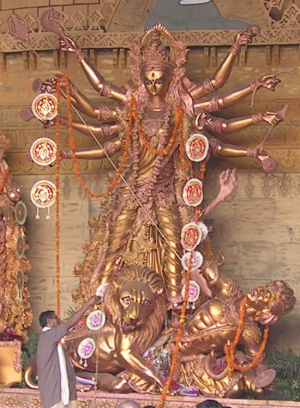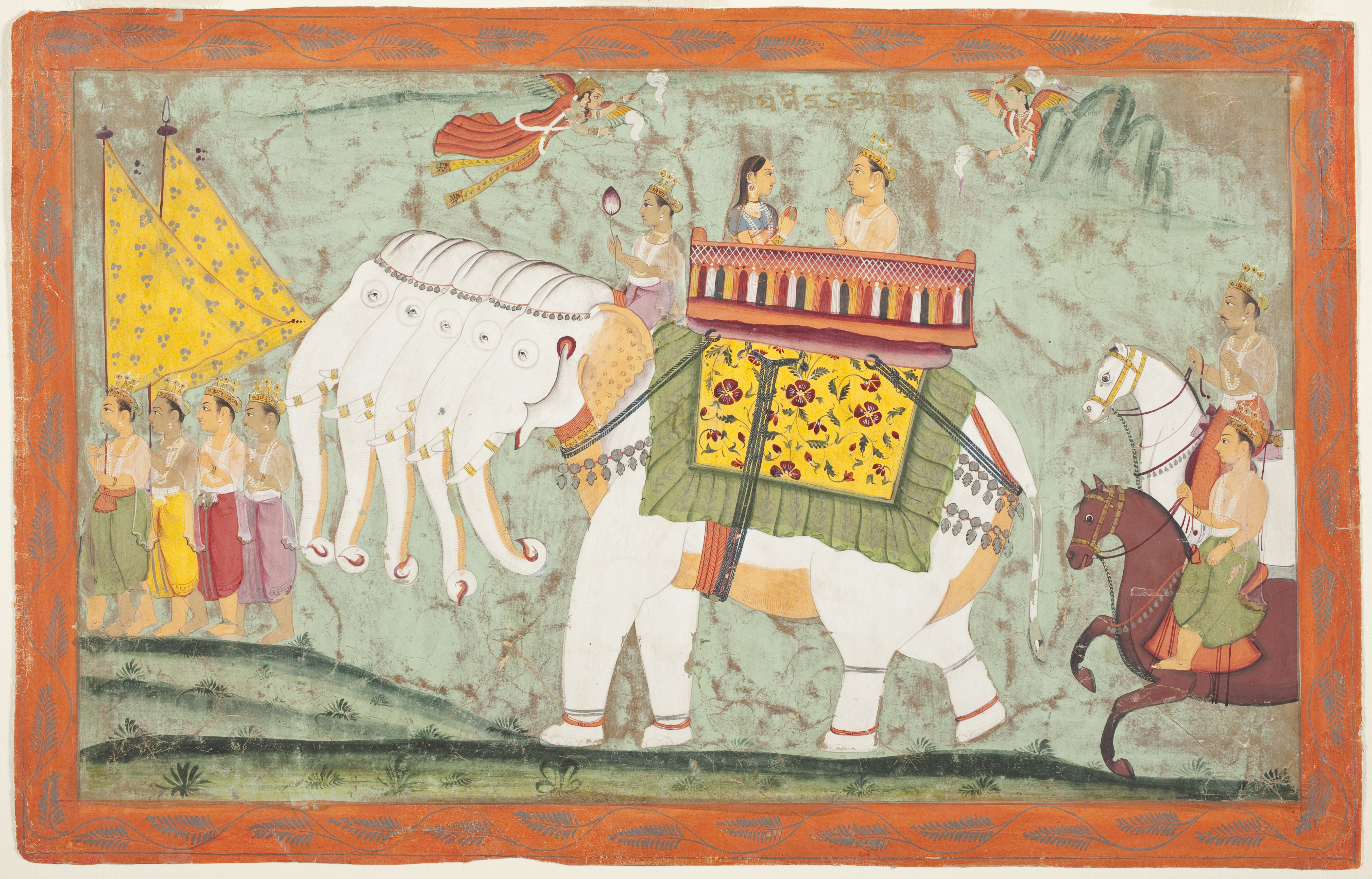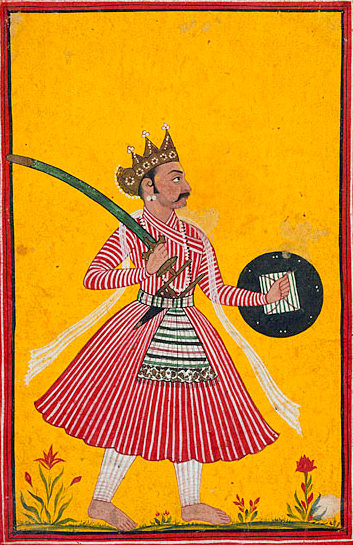 |
| Shitala, divinità indiana venerata soprattutto nell'India del nord e in Nepal |
330.000.000? Trecentotrentamilioni? Ma è possibile che le divinità indiane siano così tante? Eppure è questa la risposta che ci sentiamo dare quando chiediamo quanti sono gli dèi del subcontinente, questo è quello che troviamo scritto nei testi e questo è quello che scopriamo andando in India, visitando le città ed i villaggi. Scopriamo costantemente nuovi nomi, nuovi dèi, diverse manifestazioni o diversi nomi di dei già conosciuti.
Non ci sono solo Shiva, Brahma, Vishnu, i loro avatar quali Rama e Krishna, non ci sono solo le loro spose Parvati, Kali, Saraswati, Laksmhi e Sita, non ci sono solo i loro figli come Ganesh e Kartikeia, non ci sono solo gli dèi vedici più noti come Indra e Varuna, Agni e Prajapati, Daksha e Yama, ma esistono milioni di dei dai nomi per noi sconosciuti. Shitala, Mansa, Chamunda, Rahu, Muruga, Himawan, i Marut, Aditi e gli Aditia, Mutappan, Yellamma, Usha, Gauri, Ayappa, Nirrita, Aptya, Amsha, Kubera, Revati. Ogni regione, ogni villaggio, ogni famiglia, ogni tribù, ogni villaggio ha una propria divinità sconosciuta nelle altre parti dell’India.
In proposito la Brhadaranyaka Upanishad – la cui lettura consiglio a tutti vivamente – ci riporta un dialogo tra Vidgdha Sakalya e il saggio Yajnavalkya.
“Ma quanti sono gli dèi?” chiede Vidagdha.
“Tre e trecento, tre e tremila” risponde Yajnavalkya.
“Va bene – replica Vidagdha – ma in realtà quanti sono gli dèi?”
“Trentatre,” risponde il saggio.
“Sì, è corretto, ma quanti sono veramente?” insiste Vidagdha.
“Sei,” replica Yajnavalkya.
“Certo, ma quanti sono?”
“Tre,” risponde Yajnavalkya.
“Sì, va bene, ma veramente quanti sono?” chiede ancora Vidgdha.
“Due,” dice Yajnavalkya.
“Ma in realtà quanti sono gli dèi?”
“Uno e mezzo.”
“Ma infine, dimmi o Yajnavalkya, quanti dèi esistono?”
“Uno.”
Insomma, ekam sat vipra bahuda vadanti, Dio è uno, ma i saggi lo chiamano in modo diverso.
Non ci sono solo Shiva, Brahma, Vishnu, i loro avatar quali Rama e Krishna, non ci sono solo le loro spose Parvati, Kali, Saraswati, Laksmhi e Sita, non ci sono solo i loro figli come Ganesh e Kartikeia, non ci sono solo gli dèi vedici più noti come Indra e Varuna, Agni e Prajapati, Daksha e Yama, ma esistono milioni di dei dai nomi per noi sconosciuti. Shitala, Mansa, Chamunda, Rahu, Muruga, Himawan, i Marut, Aditi e gli Aditia, Mutappan, Yellamma, Usha, Gauri, Ayappa, Nirrita, Aptya, Amsha, Kubera, Revati. Ogni regione, ogni villaggio, ogni famiglia, ogni tribù, ogni villaggio ha una propria divinità sconosciuta nelle altre parti dell’India.
In proposito la Brhadaranyaka Upanishad – la cui lettura consiglio a tutti vivamente – ci riporta un dialogo tra Vidgdha Sakalya e il saggio Yajnavalkya.
“Ma quanti sono gli dèi?” chiede Vidagdha.
“Tre e trecento, tre e tremila” risponde Yajnavalkya.
“Va bene – replica Vidagdha – ma in realtà quanti sono gli dèi?”
“Trentatre,” risponde il saggio.
“Sì, è corretto, ma quanti sono veramente?” insiste Vidagdha.
“Sei,” replica Yajnavalkya.
“Certo, ma quanti sono?”
“Tre,” risponde Yajnavalkya.
“Sì, va bene, ma veramente quanti sono?” chiede ancora Vidgdha.
“Due,” dice Yajnavalkya.
“Ma in realtà quanti sono gli dèi?”
“Uno e mezzo.”
“Ma infine, dimmi o Yajnavalkya, quanti dèi esistono?”
“Uno.”
Insomma, ekam sat vipra bahuda vadanti, Dio è uno, ma i saggi lo chiamano in modo diverso.




















